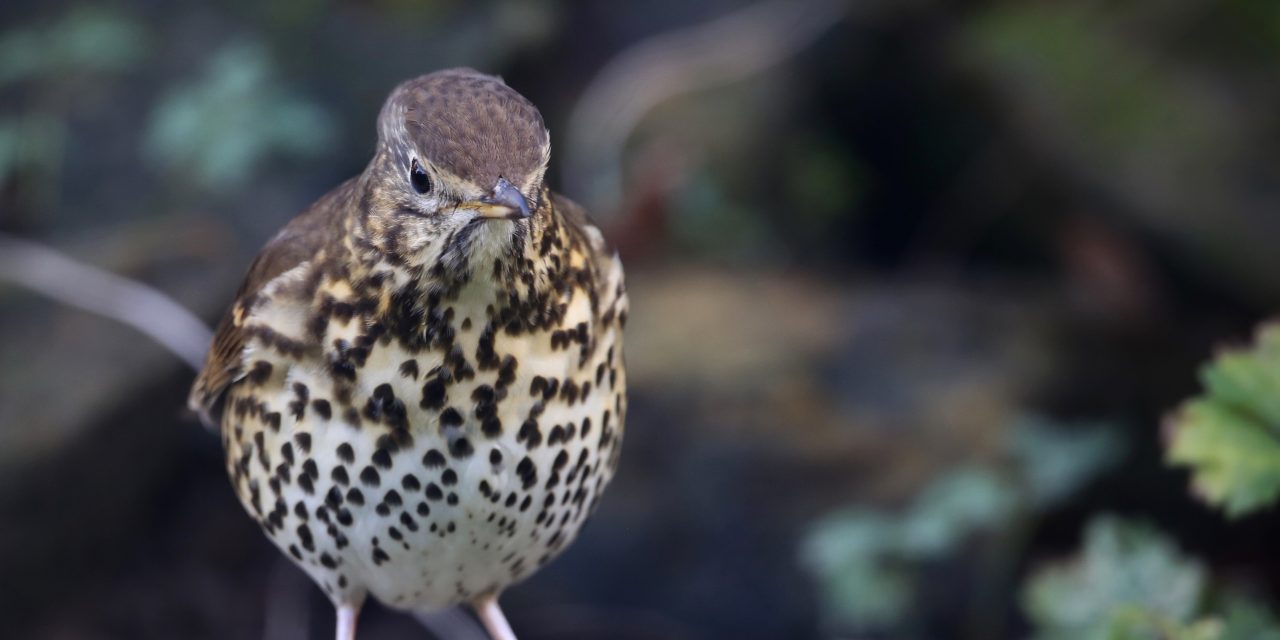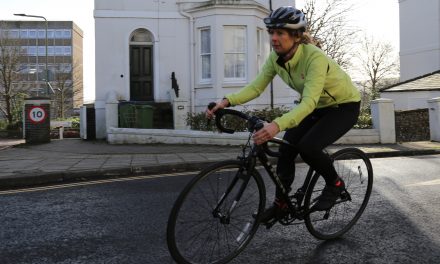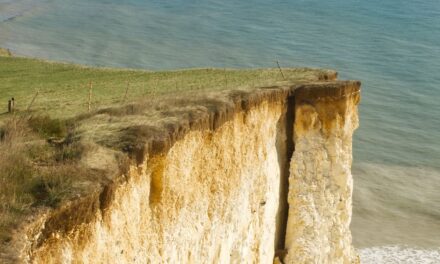Calling all wildlife lovers in East Sussex! Whether you are an experienced “twitcher” or a complete beginner, the RSPB needs your help later this month with its huge annual survey of Britain’s garden birds.
Last year more than a million people up and down the country took an hour out of their weekend to make a note of the birds that visited their garden. The Big Garden Birdwatch helped the RSPB get a better picture of the current state of our British birds.
Good for mental health
Watching the birds in your garden, on your balcony, or just from a window, can be much more than a bit of fun getting back to nature. It’s also a brilliant way of slowing down and appreciating the beauty of wildlife and can be great for our mental health.
So, if you’re going to do your bit to make sure East Sussex is on the Big Garden Birdwatch map for 2022, what should you look out for, and how can you encourage our feathered friends to your patch? This is our guide to what to look out for, and how to encourage some new avian visitors.
Make them welcome
If you provide for the birds, they will come – especially at this time of year when they’re busy spotting sources of food and potential nesting spots. If you have garden space put out some feeders with seeds, suet, fruit, peanuts (not salted), meal worms etc.
And you can have a lot of fun making your very own bird feeders out of recycled bits and pieces. The National Trust has a brilliant guide with some super ideas. How to make a recycled bird feeder | National Trust
But also put food out on the floor – not all birds will flock to your feeders. Blackbirds, thrushes, and dunnocks, for example, are much happier feeding on the floor and will rarely attempt grabbing a quick meal at a feeder.
And if you don’t have a garden or balcony space, you could always try one of those feeders that attaches to a window through suction. I always doubted these until I put one up at home – and was amazed to see the number of birds that used it.
And don’t forget water. Birds need to drink, too. You don’t need a fancy bird bath, but just something with a bit of fresh water in it. And if you put up some nesting boxes, you may find the birds love your space so much they move in!
Bird-spotting
If you want to count the birds find yourself somewhere comfortable indoors where you have a good view of the feeders or the space you’re observing. Try to be as inconspicuous as possible and try to keep still, avoiding any sudden movements. The less the birds sense danger, the more comfortable they will be visiting your space.
You may know the common garden birds but even if you do, try to have a bird book close to hand. If you don’t have one, the RSPB has a useful online tool to help Bird Identifier | British Garden Birds and Many More – The RSPB . You may only spot the more common birds, or you may see something a bit more unusual. Have a notebook and pen so you can collect the results and then let the RSPB know what you’ve seen.
If you can’t identify the bird at first make a note of its colour, size, any unusual colours on its head or wings, and the type of beak it has. And is it on its own or in a group? These will all help you as you try to figure out later what it was. Incidentally, while it may sound odd to also look at the colour of their legs, sometimes this can be a clue. For example, if you see a seagull look at its leg colour – if they’re yellow it’s likely a common gull, if they’re pink it’ll be a herring gull.
The Sussex Wildlife has put together a brilliant guide to watching and spotting birds. It tells you everything you might need to know. Category | Sussex Wildlife Trust
What birds to look out for
Sparrow
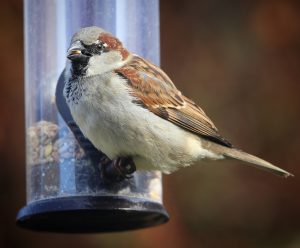
The humble house sparrow is most likely to top your list. Look out for the darker brown markings of the male bird, and the softer browns of the female. They often move about in family groups so don’t be surprised if they descend in numbers. They will quite happily use the feeders and also seem to like most food!
Dunnock
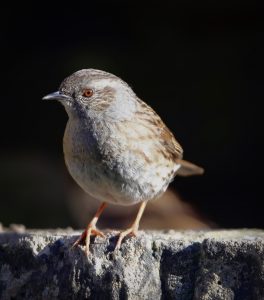
The house sparrow’s relative, the dunnock, is also sometimes called the hedge sparrow. It is more timid than its bolder cousin and is smaller and more delicate, with more grey around its neck and chest. It will eat from the floor, not the feeder, and can often be seen picking up the pieces under the feeders while its garden buddies get to work over head.
Robin
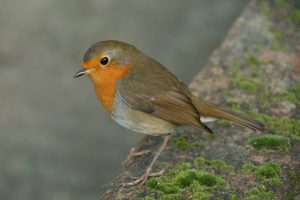
The robin is a British favourite and, as a Christmas card regular, often portrayed as the cute cuddly garden visitor. The truth, though, is a that beautiful little bird with its orange chest (both male and female have this) is actually a feisty feathered friend. It is fiercely territorial and can often be seen fighting off other robins from its patch. They are wonderfully inquisitive birds, however, and among the bolder of our garden visitors. I have a robin in my garden that often perches on my windowsill while I work and makes eye contact with me. The same bird often comes and joins me in the garden when I’m working outside. If you want to attract robins use dried mealworms – they love them.
Blue tits and Great tits
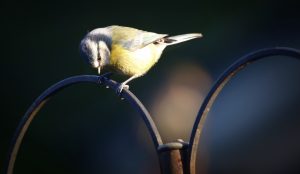
Tits are wonderful birds and you’re likely to see both blue tits – small, delicate birds with (yes, you guessed it) a blue cap and blue flashes on its wings, and its slightly bigger cousin, the great tit, with its handsome black cap, beard and stripe down its chest. If you’re lucky you may see a coal tit – not unlike the great tit but smaller and much less yellowy, or even a long tailed tit, a beautiful small fluffy white and grey bird with orangey red splashes and, yes, a longer tail. They will rarely be on their own, however. Tits will eat most seed, peanuts and suet, but to get them really excited, put out fresh coconut.
Starling
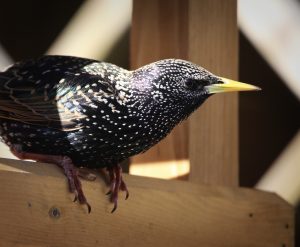
The starling gets a bad press. To be fair, it is the slightly thuggish of our garden birds and moves around in boisterous gangs. Although a ground bird it is highly adaptable though not always very delicate so don’t be surprised to see them flocking around your feeders and making a real mess. If you see them close up you’ll see they aren’t the dull dark grey birds so many dismiss them as. They have marvellous markings and colours and, with a bit of well-placed sunshine, shine magnificently. They are larger than the sparrows, robins and tits so can boss about their garden companions.
Blackbird
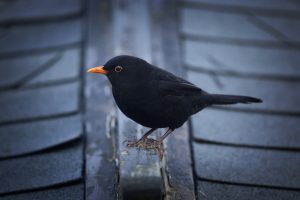
The serene king of the garden birds has to be the blackbird. Again, the big clue to spotting it is in its name. Dark matt black, the male has a distinctive orange beak. The female is less colourful and a soft brown colour. You won’t see a blackbird on a feeder but always generally on the floor. It much prefers worms and insects to any feed you put out, but will not say no to a discarded seed – normally cast down from the feeder by the chaotic squabbling starlings. In the spring the blackbird, with its warbly song, will often be the first bird you hear in the morning and the last you can listen to at night.
Song thrush
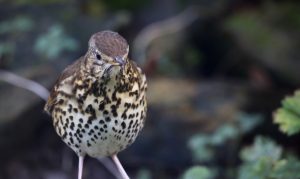
One of my favourite birds has made a welcome return to my garden in the past couple of years. The song thrush, and its sibling the mistlethrush, are beautiful blackbird-size birds with creamy brown colourings and distinctive blotched markings on their chest. Again, the thrushes tend to be more timid – you can almost see the surprise and fear in their eyes when they spot the starling hoody gang. Put some feed on the floor and they’ll thank you.
Wren
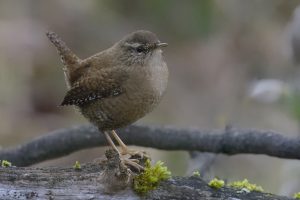
Our smallest regular garden bird is also one with the loudest most piercing song, though you’ll need to wait until spring to hear its amazing sound. The wren is easy to spot – smaller than the sparrows they are mainly a soft brown colour. But it’s their small up-turned tail that makes them easy to spot. They’ll eat most seeds but, again, prefer insects so check the hedges and small bushes where you might see them flitting from branch to branch.
Wood pigeon
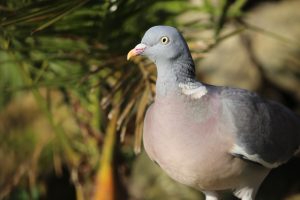
One bird that has increased significantly in recent times is the wood pigeon. It’s easy to dismiss this garden visitor thanks to the nuisance reputation of its smaller feral relative. However, the wood pigeon, larger and rounder with its grey colouring and pinkish chests, is a quite beautiful bird. They plod around the garden but often, amusingly, attempt to access the seeds in the feeders. Because of their bulk, this can be funny to watch.
Finches
It used to be the case that you would be surprised not to see a finch or two in your garden. The green finch, sparrow-sized but yellowy green and with a powerful beak, was a regular. However, numbers have plummeted so if you’re lucky enough to see one, make sure you let the RSPB know. You may be lucky and see a family of goldfinches (they’re rarely alone) with their red faces and bright yellow wing flashes.
Magpie
Finally, a bird that is very much a double-edged sword. While the magpie is a strikingly handsome bird with its black and white plumage and blue stripe across its wings, it is also often the villain of the garden. Part of the crow family, the magpie will eat seeds and other food left out – but it’s also a predator and a scavenger. As such it can, and does, target the nests of other garden birds and will happily attack and predate the young.
More unusual birds
While those I’ve listed above are the most likely to feature on your list, also be prepared for the more unusual. In my garden I’ve spotted nuthatches (climbing up the trunk of a tree), woodpeckers, and even a fieldfare – a type of thrush rarely seen in gardens apart from in bad weather when access to their usual berries and feed is more difficult. And if you have a pond you might see a heron, though they obviously won’t be after your feeder food, they’ll be eyeing a fish supper in the water!
But whatever you see, just enjoy it. Birds are wonderful little creatures and they all have different behaviours and personalities. Some are shy, some are bold. Some are bullish, some timid. And an hour spent being quiet connecting with wildlife cannot be a bad thing, can it?
